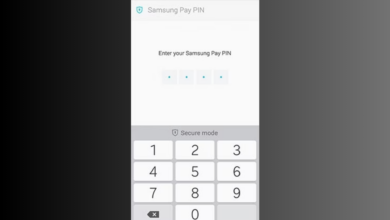How to Connect PS5 to Samsung TV: A Step-by-Step Guide

Connecting a PlayStation 5 (PS5) to a Samsung TV is a straightforward process, but it can be a bit daunting if you’ve never done it before. Whether you’re a seasoned gamer or someone who’s just getting started, it’s important to understand the process so you can enjoy your games on a high-quality display.
In this article, we’ll walk you through the steps you need to follow to connect your PS5 to your Samsung TV. From finding the right cables to setting up the input and output settings, we’ve got you covered. By following these simple instructions, you’ll be able to enjoy your favorite PS5 games on your Samsung TV in no time.
How to Connect PS5 to Samsung TV
1. Setup Your PS5:
- Ensure that your PS5 is in a safe and stable position, either vertically using the base or horizontally.

2. Plug in the PS5:
- Connect the power cord to the PS5 and plug the other end into an electrical outlet.
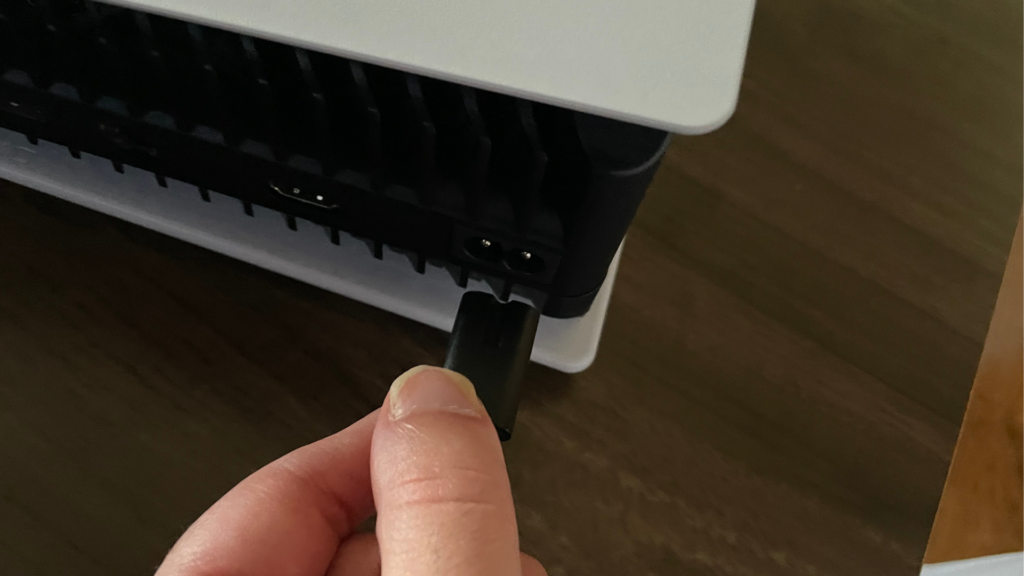
3. Connect HDMI Cable:
- Plug one end of the HDMI cable into the HDMI OUT port on the back of the PS5.
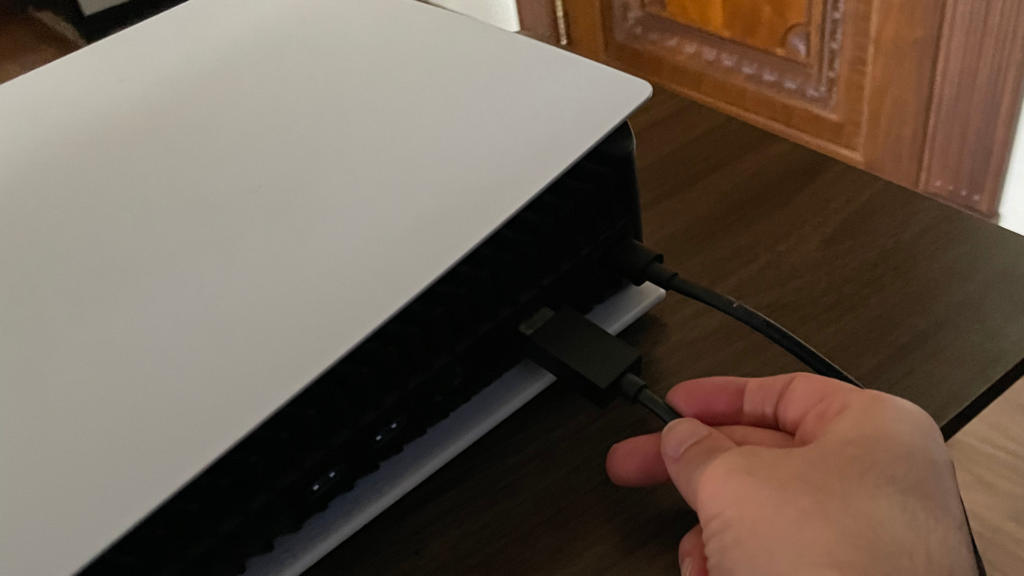
- Plug the other end of the HDMI cable into an available HDMI IN port on your Samsung TV. Remember the HDMI port number (e.g., HDMI 1, HDMI 2, etc.), as you’ll need it to select the correct input source on your TV.
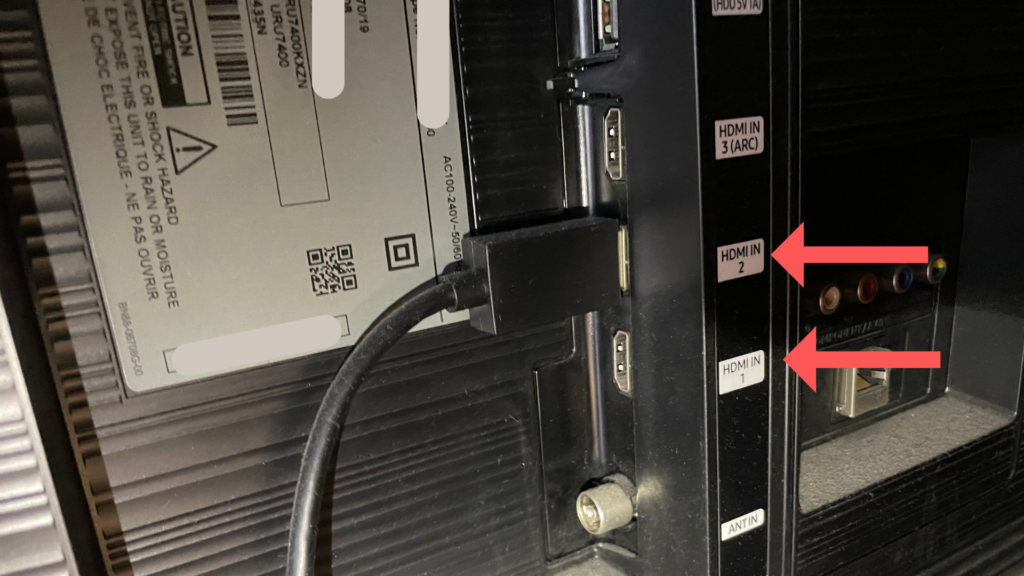
4. Turn on the TV and PS5:
- Power on your Samsung TV using the remote. Press the home button, which may vary depending on the specific remote you’re using.
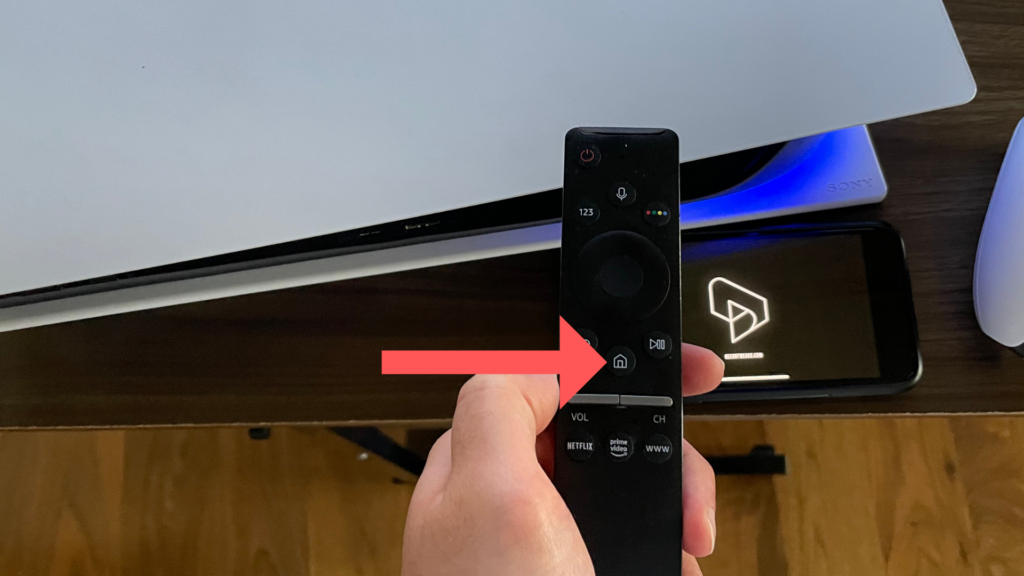
- Navigate to Source, then use the remote to select the appropriate HDMI input source that corresponds to where you plugged in the HDMI cable. For example, if you plugged the PS5 into the HDMI 2 port, select HDMI 2 as the source/input.
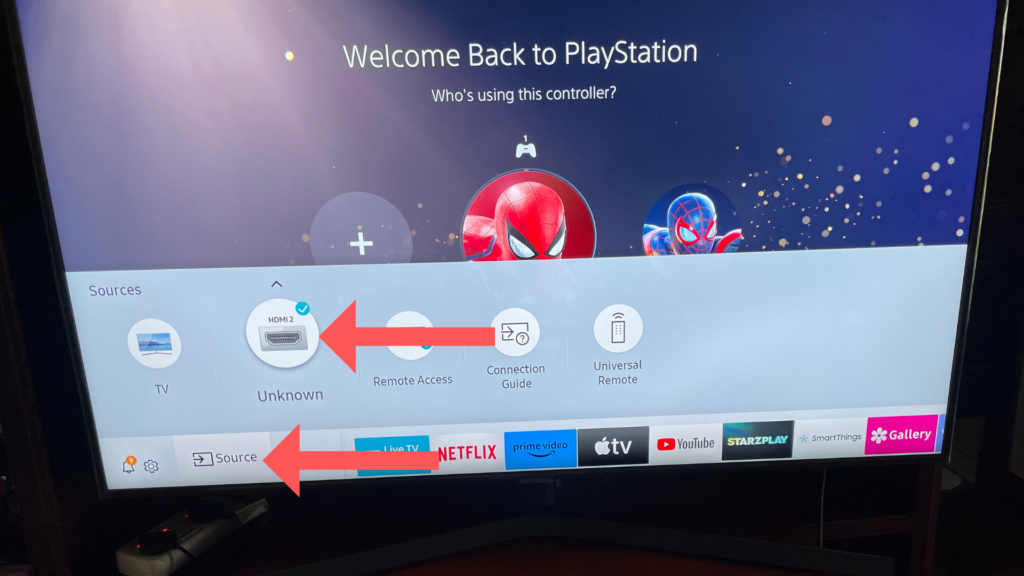
- Turn on your PS5 by pressing the power button. You should see the PS5’s startup sequence on your TV.
5. Setup Your PS5:
- The first time you turn on your PS5, you’ll need to go through an initial setup process. This includes setting your language, time zone, connecting to the internet, and logging into your PlayStation Network account if you have one.
6. Adjust Settings if Needed:
- Depending on your Samsung TV model and the PS5 settings, you might need to adjust the display settings to get the best visuals and performance. The PS5 will typically auto-detect the best settings for your TV, but you can manually adjust settings like resolution and HDR in the PS5’s system settings if needed.
- If your Samsung TV supports HDMI-CEC (often branded as Anynet+ by Samsung), you can enable this feature on both the TV and PS5 to allow them to control each other. For example, turning on the PS5 could automatically turn on the TV and switch to the correct HDMI input.
7. Enjoy Gaming:
- Once everything is set up, you can start playing games, streaming content, and enjoying everything the PS5 has to offer!
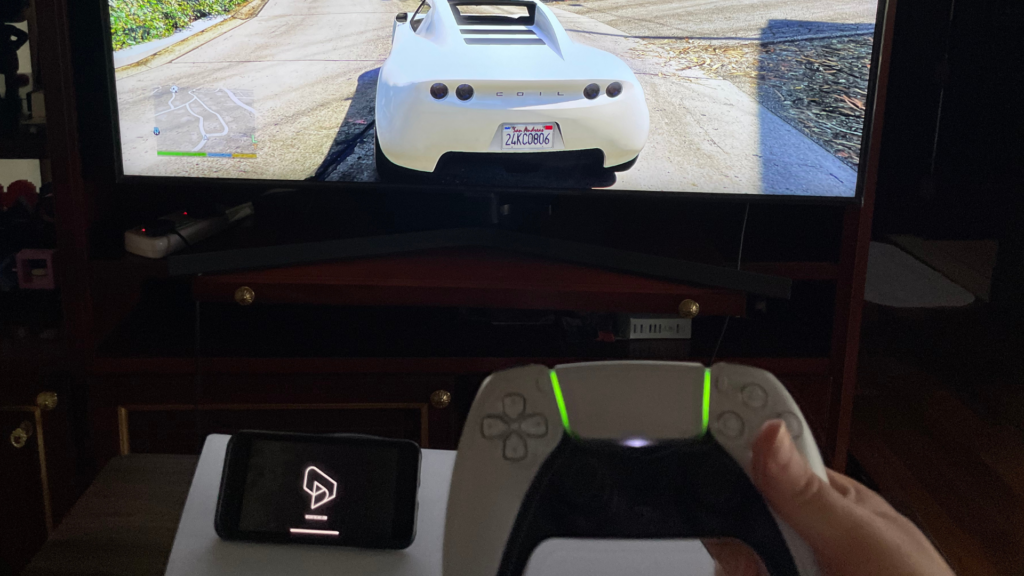
Visual & Audio Settings
Connecting a PS5 to a Samsung TV isn’t just about establishing a link; it’s about achieving an optimum visual and auditory gaming experience. Here’s how you can ensure both the picture and sound from your PS5 are at their best:
- Picture Settings:
- Resolution: For optimal display on your Samsung TV, ideally 4K for newer models, set your PS5’s resolution via Settings > Screen and Video > Video Output. If ‘Automatic’ is chosen, it’ll align with the TV’s top-supported resolution.
- HDR: High Dynamic Range enhances the color and contrast of your gaming visuals. If your Samsung TV supports HDR, turn it on both on the TV (usually under Picture Settings) and the PS5 (‘Screen and Video’ settings). Some TVs automatically detect HDR content and adjust accordingly.
- Game Mode: Samsung TVs often come with a ‘Game Mode‘ that reduces input lag, ensuring your in-game actions and the visuals on the screen are in sync. Activate it via the TV’s picture settings when gaming.
- Sound Settings:
- Audio Output: The PS5 supports various audio formats. Navigate to the ‘Sound’ section in the PS5’s system settings and select ‘Audio Output’. Ensure it’s set to either ‘Linear PCM’ for regular TV speakers or the appropriate format if you have a home theater system connected.
- Soundbar/External Speakers: If you’re using a soundbar or an external speaker system, ensure it’s correctly connected to the TV (either through HDMI ARC, optical, or another connection) and select the appropriate audio output on both the TV and PS5.
- 3D Audio: The PS5 has a unique 3D audio feature for supported headphones. If you’re using headphones, explore the 3D audio settings on the PS5 for a more immersive experience.
- Calibration:
- Take the time to run any available calibration tools. The PS5 has a built-in tool that will guide you through optimizing visual settings for your specific TV. This ensures that colors, brightness, and contrast ratios are all set for the best possible experience.
- Similarly, Samsung TVs often come with calibration settings or tools, especially for advanced models. Exploring these can enhance your overall visual experience.
- Tips:
- Remember to adjust the brightness and contrast settings according to the lighting conditions in your room. Darker rooms might require different settings compared to well-lit rooms.
- If you’re experiencing audio delays (where the sound doesn’t match the on-screen action), delve into the sound settings of your Samsung TV. There’s usually an option to adjust audio sync.
Fine-tuning these visual and audio settings can profoundly enhance your gaming sessions, making them more immersive and enjoyable.
Troubleshooting
When connecting your PS5 to a Samsung TV, you might occasionally run into issues that prevent an optimal gaming experience. Here are some common problems and their solutions:
- No Picture or Sound:
- HDMI Connection: Ensure that the HDMI cable is securely connected to both the PS5 and the TV. Try using a different HDMI port on the TV or a different HDMI cable to rule out hardware issues.
- Input Source: On your Samsung TV remote, ensure you’ve selected the correct HDMI input source corresponding to where the PS5 is connected.
- Power Cycle: Turn off both the TV and the PS5, then turn them back on. This simple step can resolve many connection issues.
- Poor Picture Quality:
- Resolution Mismatch: Make sure the PS5’s output resolution matches the TV’s native resolution. A mismatch can cause blurry or pixelated images.
- HDR Issues: If colors appear washed out, ensure that HDR settings are consistent on both the PS5 and the TV. If only one device has HDR enabled, it can lead to display issues.
- Cable Quality: Not all HDMI cables are the same. For 4K and HDR content, an HDMI 2.0 (or higher) cable is recommended.
- Sound Issues:
- Audio Output: Navigate to the PS5’s sound settings and ensure the audio output matches your setup, be it TV speakers, a soundbar, or a home theater system.
- Volume Levels: Check the volume on both the PS5 and the TV. Sometimes, one may be muted or set at a low volume, causing apparent sound issues.
- External Speakers: If using external speakers, ensure they’re properly connected and the correct audio source is selected on the speakers or receiver.
- Input Lag:
- Game Mode: Activate ‘Game Mode’ on your Samsung TV. This mode minimizes input lag for a more responsive gaming experience.
- Software Updates: Ensure both your Samsung TV and PS5 are updated to the latest firmware/software. Manufacturers often release updates to improve compatibility and performance.
- The blank screen or a “no signal” Issue:
- To resolve this, turn off both the PS5 and TV, disconnect the HDMI cable, reconnect it, then power both devices back on.
- Networking Problems:
- If you’re facing issues with online gaming or streaming on the PS5, test your internet connection via the PS5’s settings.
- Consider using a wired connection for more stable internet, or move the PS5 closer to the Wi-Fi router if using a wireless connection.
When facing any issues, it’s always a good idea to refer to the official support websites of both PlayStation and Samsung, as they frequently provide up-to-date solutions and troubleshooting guides.


